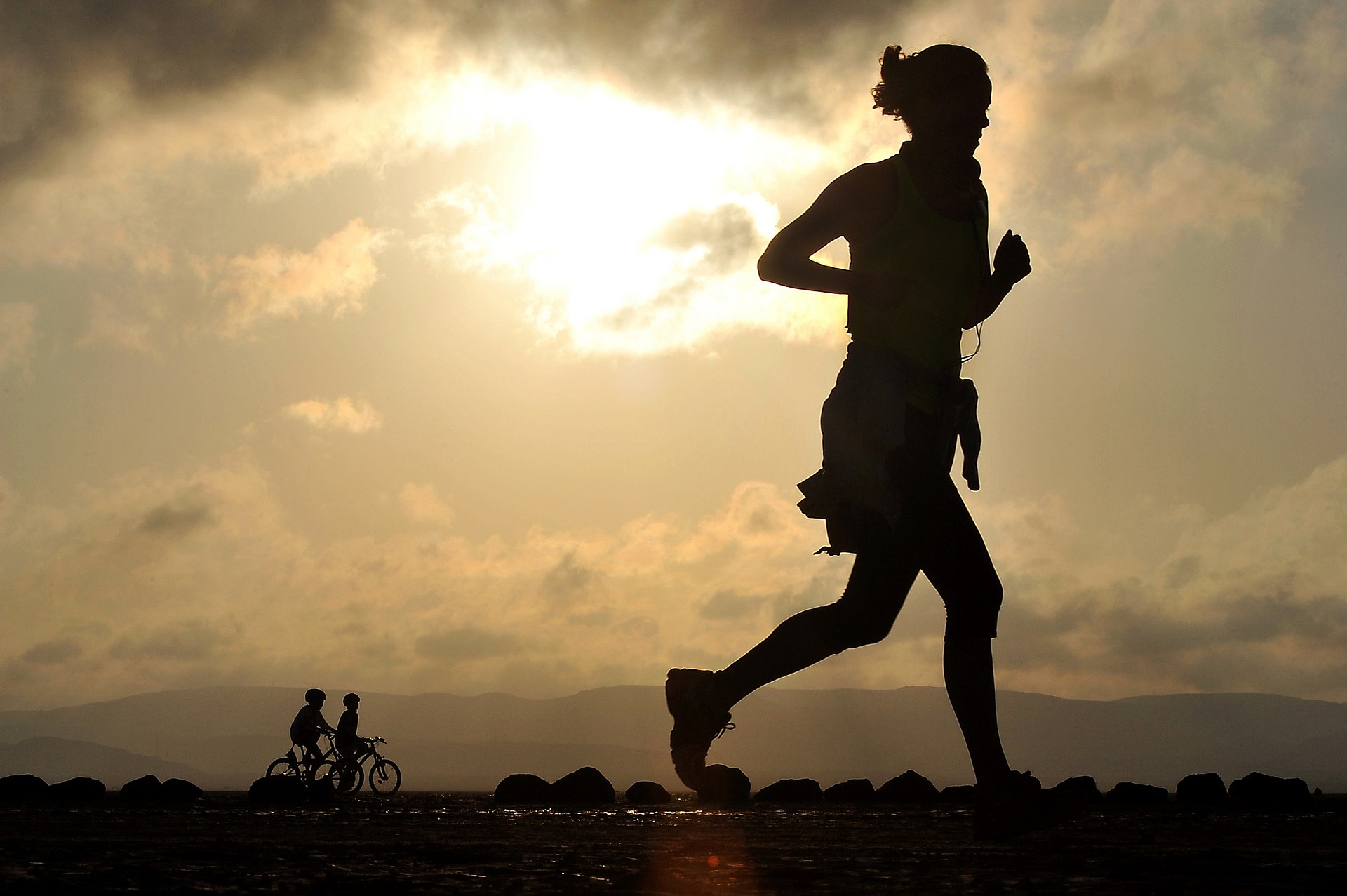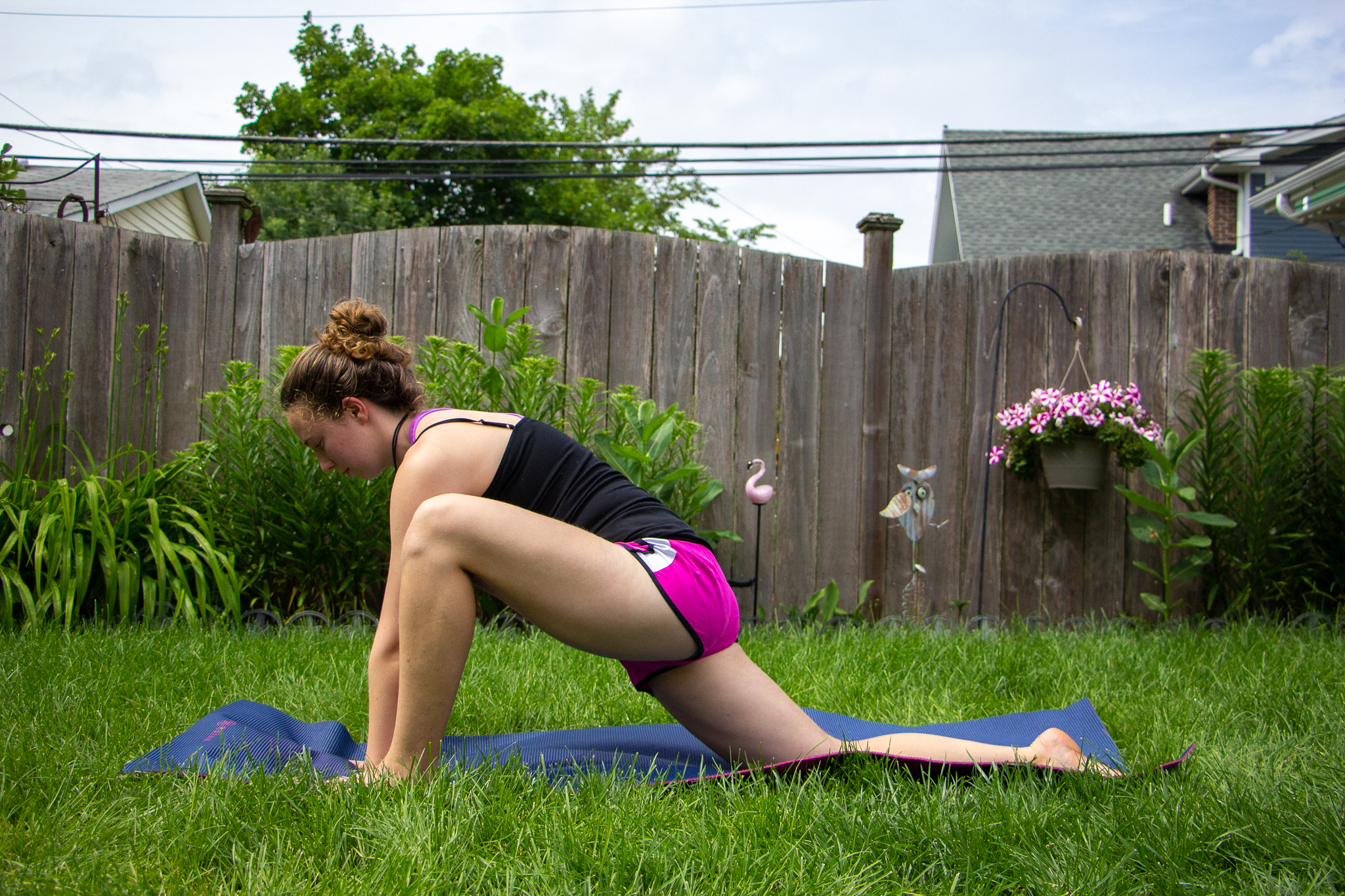You may have seen foam rollers being used at the gym—those long foam cylinders people roll around on before/after their workout. Is foam rolling legit or is it just another over-hyped gym phenomenon? According to the American Council on Exercise, foam rolling is here to stay. It’s been shown to reduce the risk of developing tissue adhesions (or “knots”), reduce tissue tension and muscle tightness, increase joint range of motion, reduce soreness after a workout, increase blood flow, and promote relaxation.
Foam rolling promotes myofascial release, which eases the fascial tissue surrounding muscles. I like to describe fascia to clients as the saran wrap covering our body. Muscle is surrounded by fascial tissue, and that tissue allows layers of muscle to slide against one another to produce motion. When collagen (which you may have heard of in the context of supplementation, but is in fact a specific protein molecule that is already produced by all of our bodies, and is responsible for the structure and rigidity of our muscles) forms adhesions between layers of muscle, this can limit tissue extensibility and joint range of motion. Foam rolling addresses this cycle by breaking up the adhesions, allowing the muscles to properly lengthen and function normally.
There are a myriad of ways to foam roll, but I like to start clients out with five basic movements that cover many important muscles:
1. Upper back. This is my personal favorite way to foam roll. I do this ten times every morning and night, and I find that it makes me sit up straighter and feel less tension in my upper back and neck. I’ve also seen this movement alleviate lower back pain for clients.
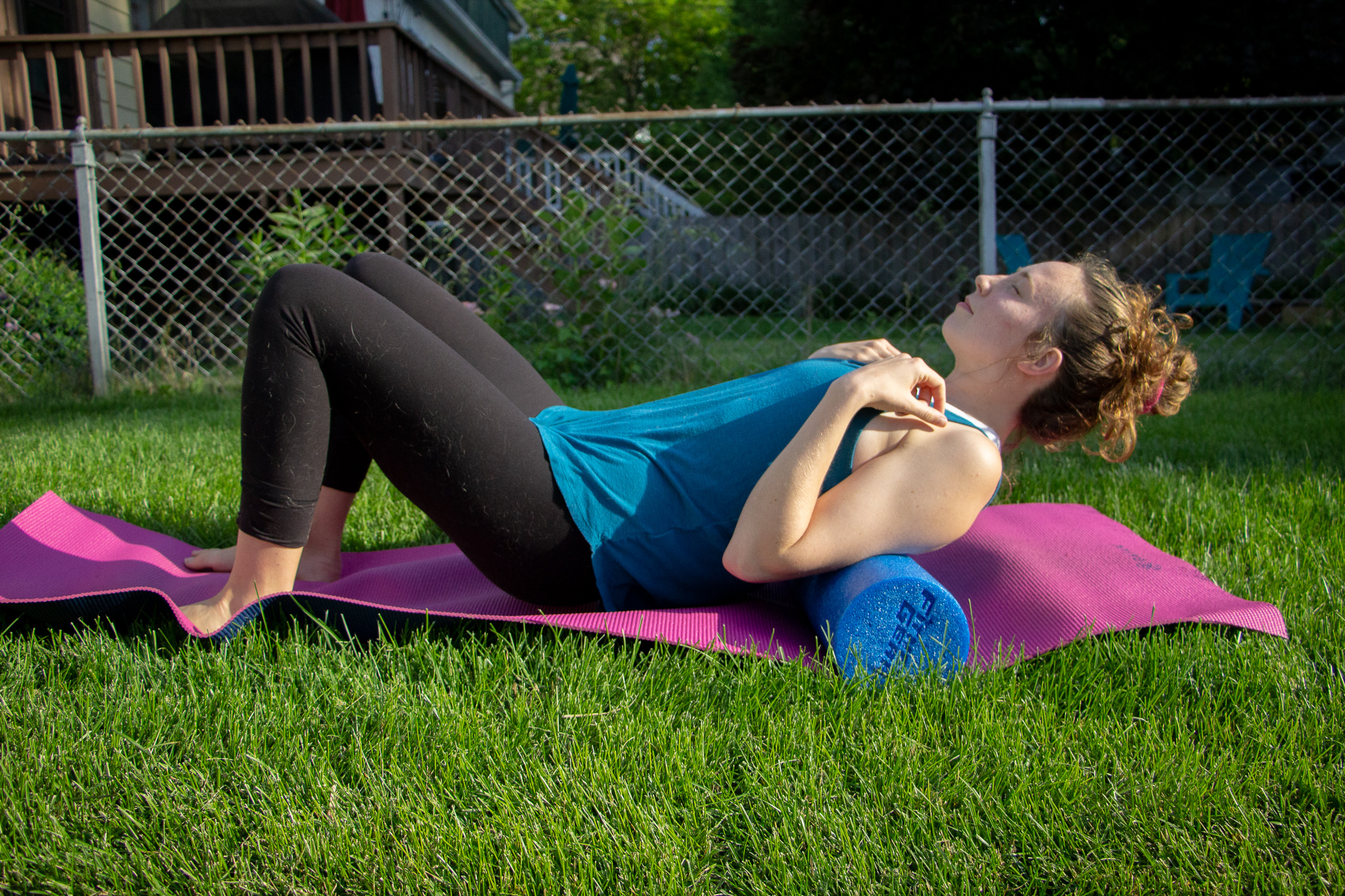
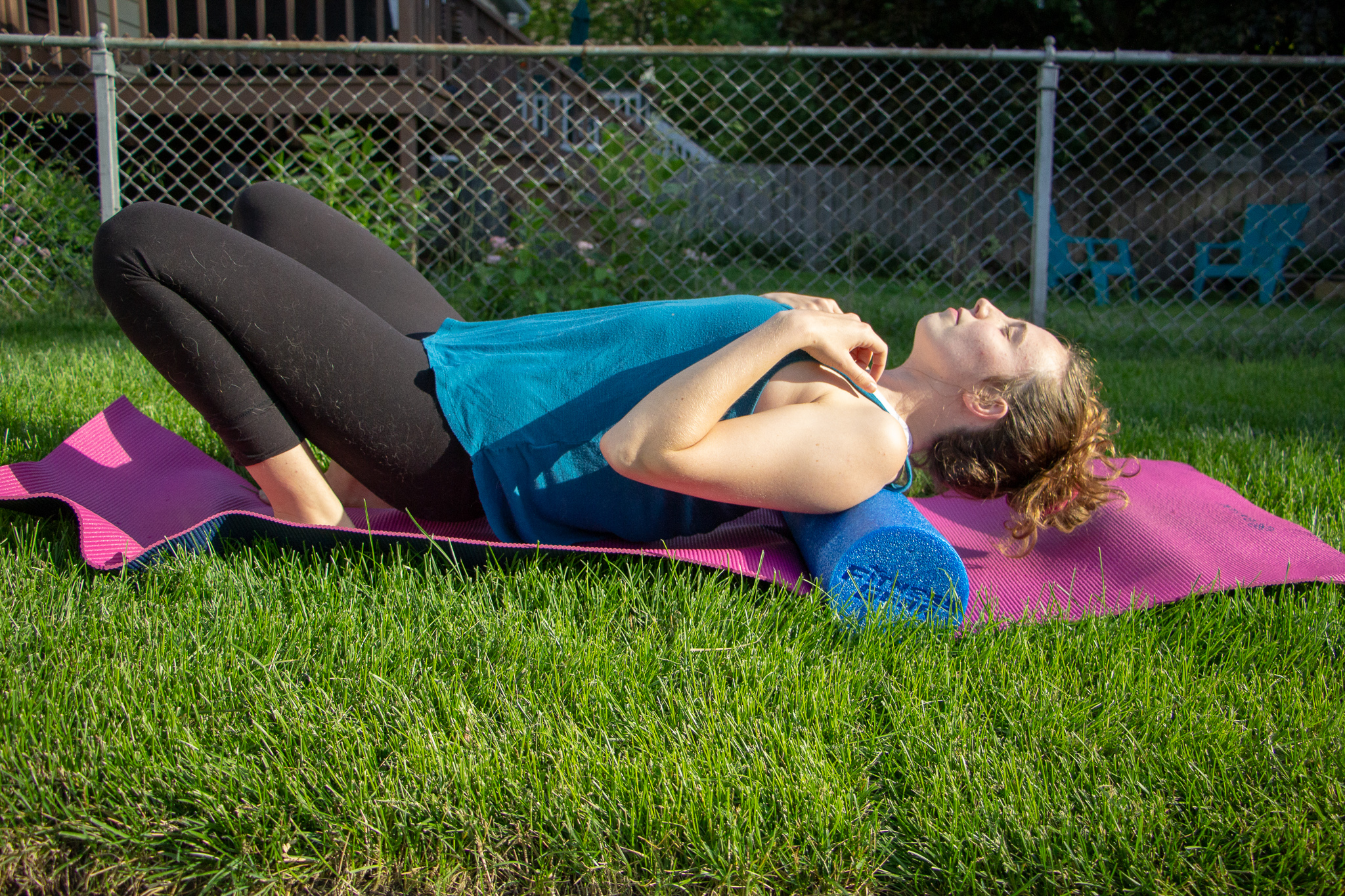
Place the foam roller in the middle of your upper back, or right where your sports bra ends. Roll up to just below the base of your neck, or where you would put a barbell on your back. Repeat 10 times.
2. Quadriceps. Warning: this one is definitely going to be a little tender, especially if this is your first time foam rolling. But it’s amazing for easing tension in your quads, especially after a lower body workout!
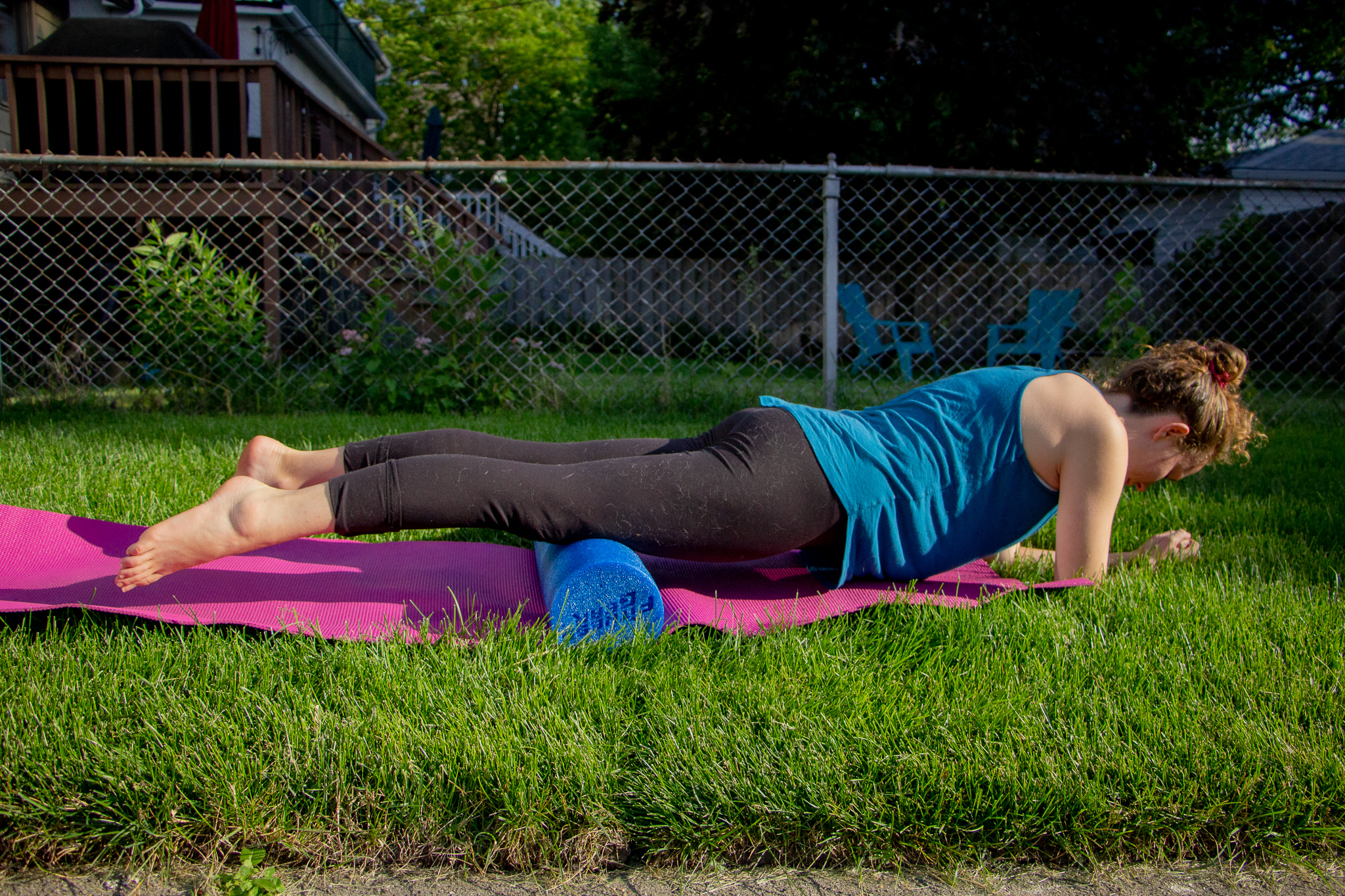
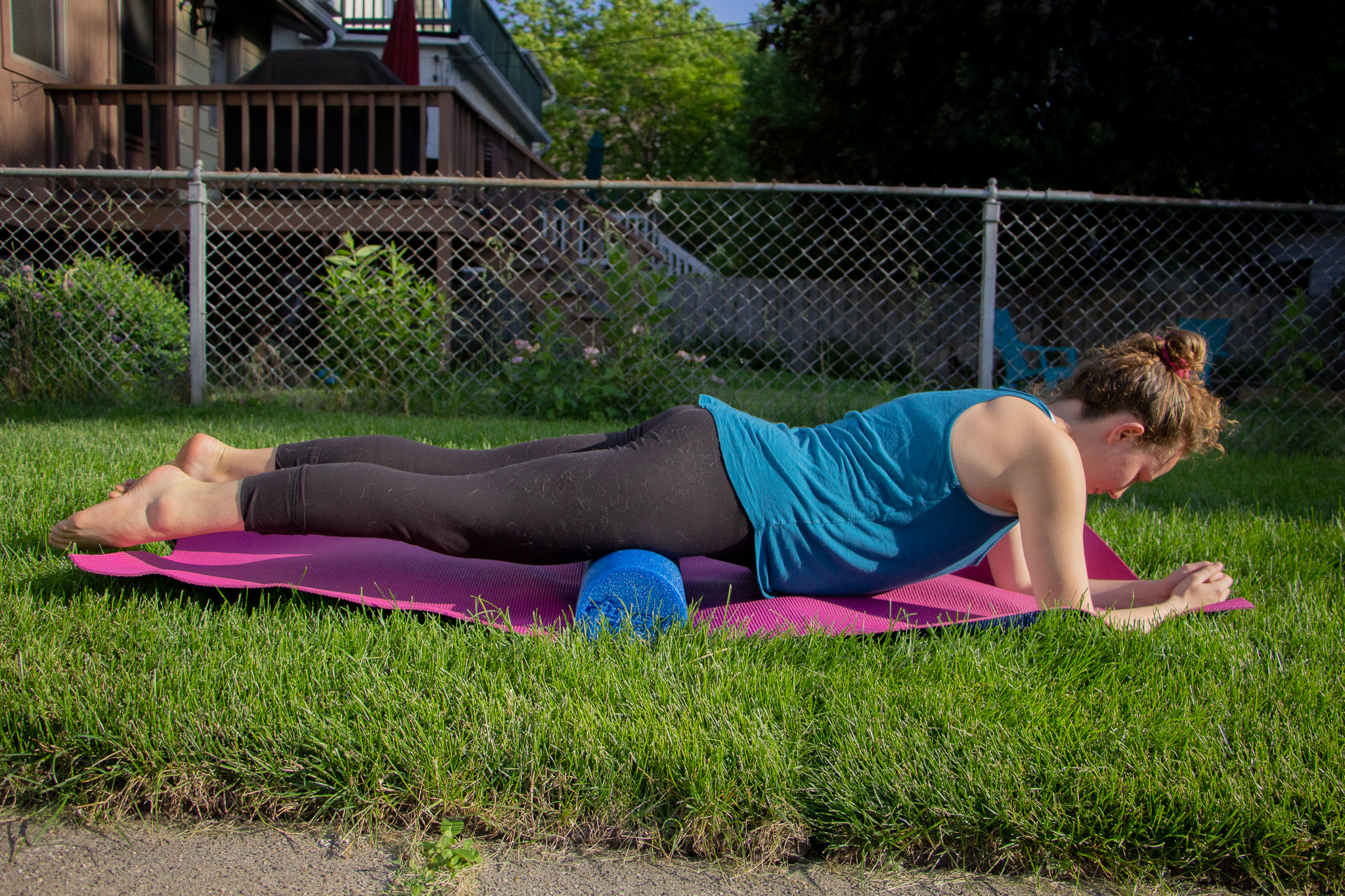
Lay on your stomach and place the foam roller on your thighs just above your knees. Support yourself with your hands or elbows. Roll back until the foam roller is just below your hips. Repeat 10 times.
3. Hamstrings. Most of us have tight hamstrings from sitting in desks all day! Sitting for a long period of time causes the hamstrings to become tight and rigid. Foam rolling can counteract that tightness!
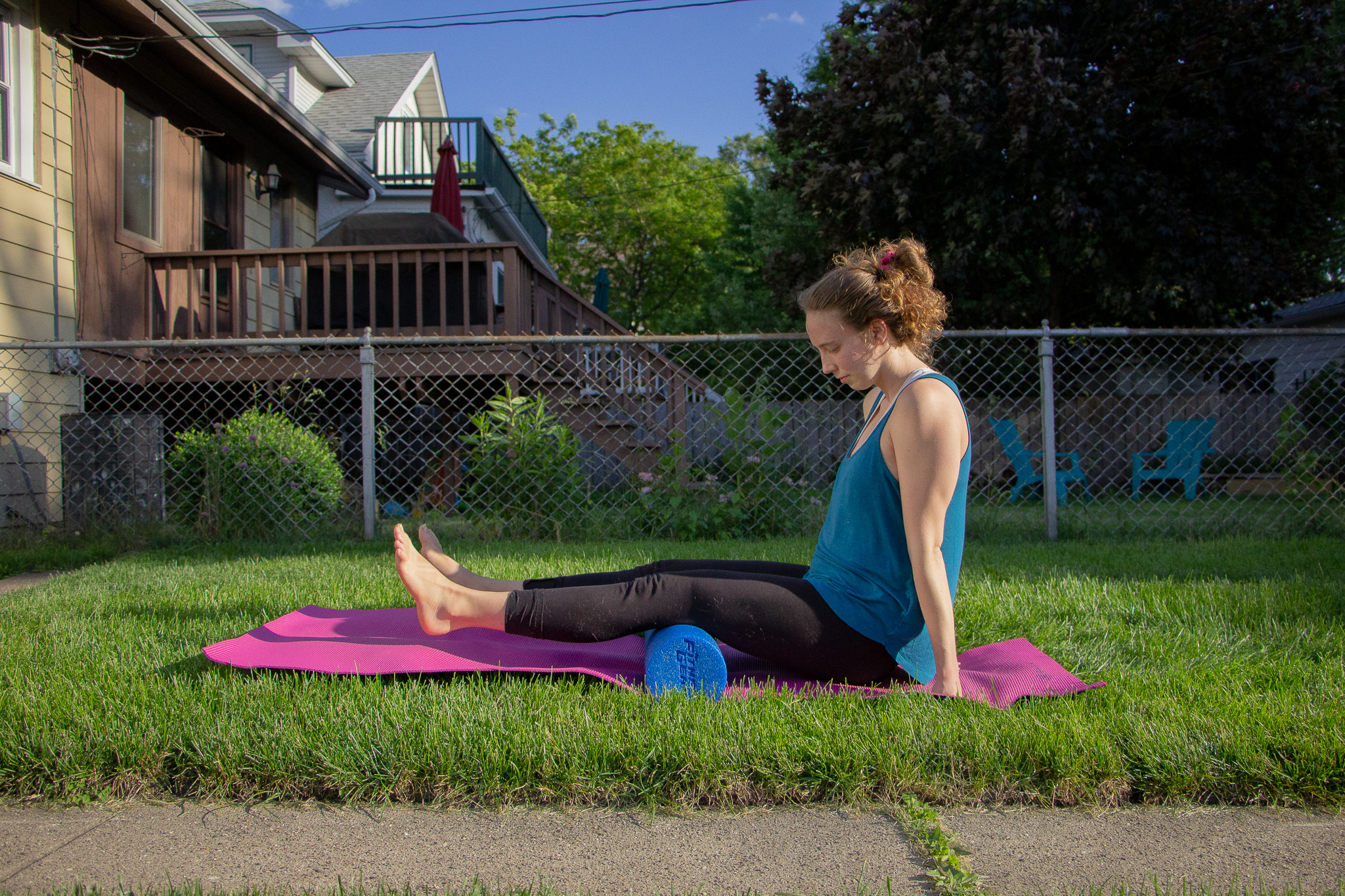
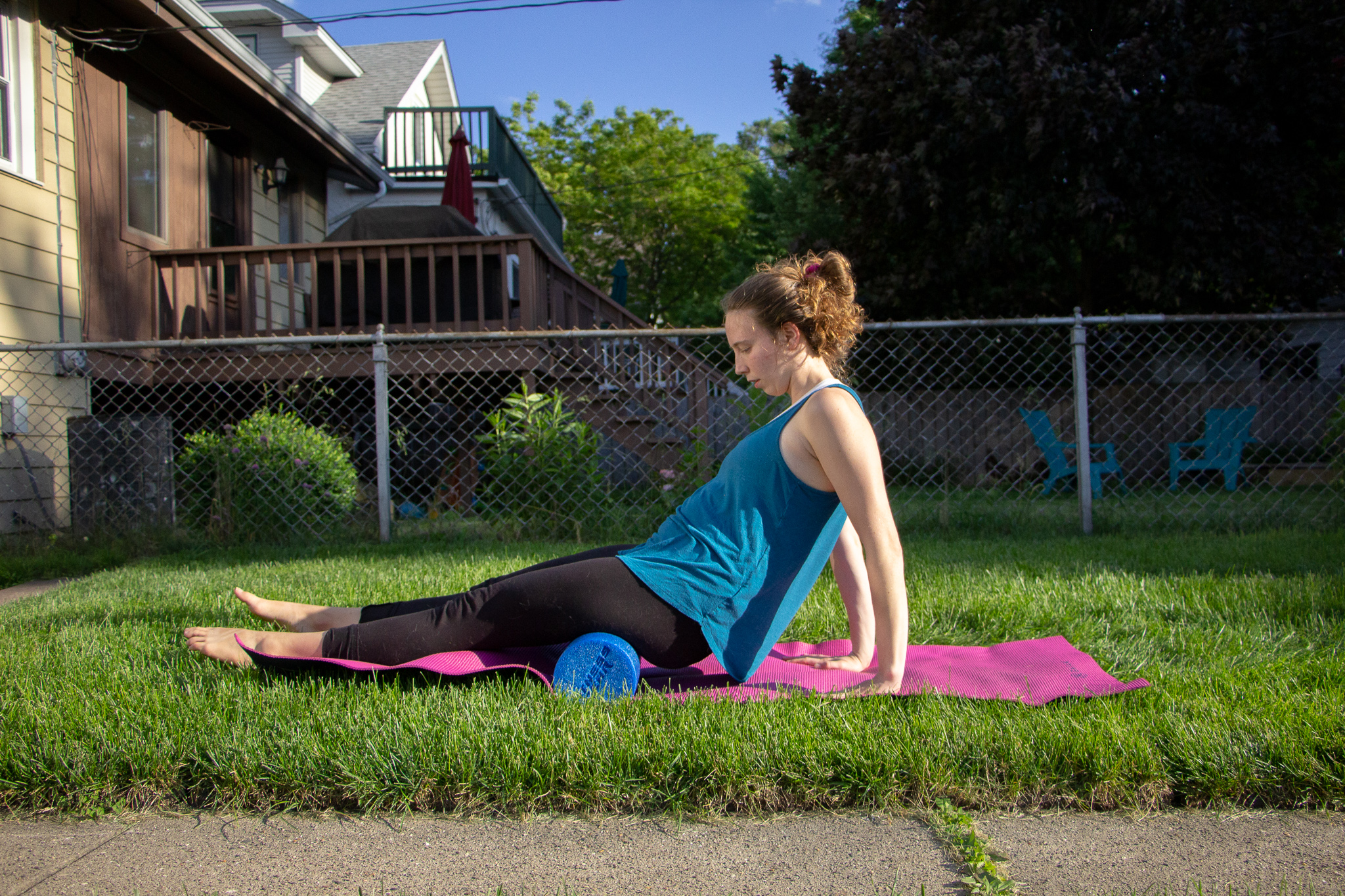
Sit up on the foam roller with the roller on the back of your thigh just above your knee. You can support yourself by placing the hands behind your back. Start to roll forward so that the foam roller covers the back of your thigh. You can stop at the base of the glutes or go over the glutes as well if you’d like. Repeat 10 times.
4. Calves. Whether it’s from running, hiking, biking, or even just walking – the calves can build up a lot of tension!
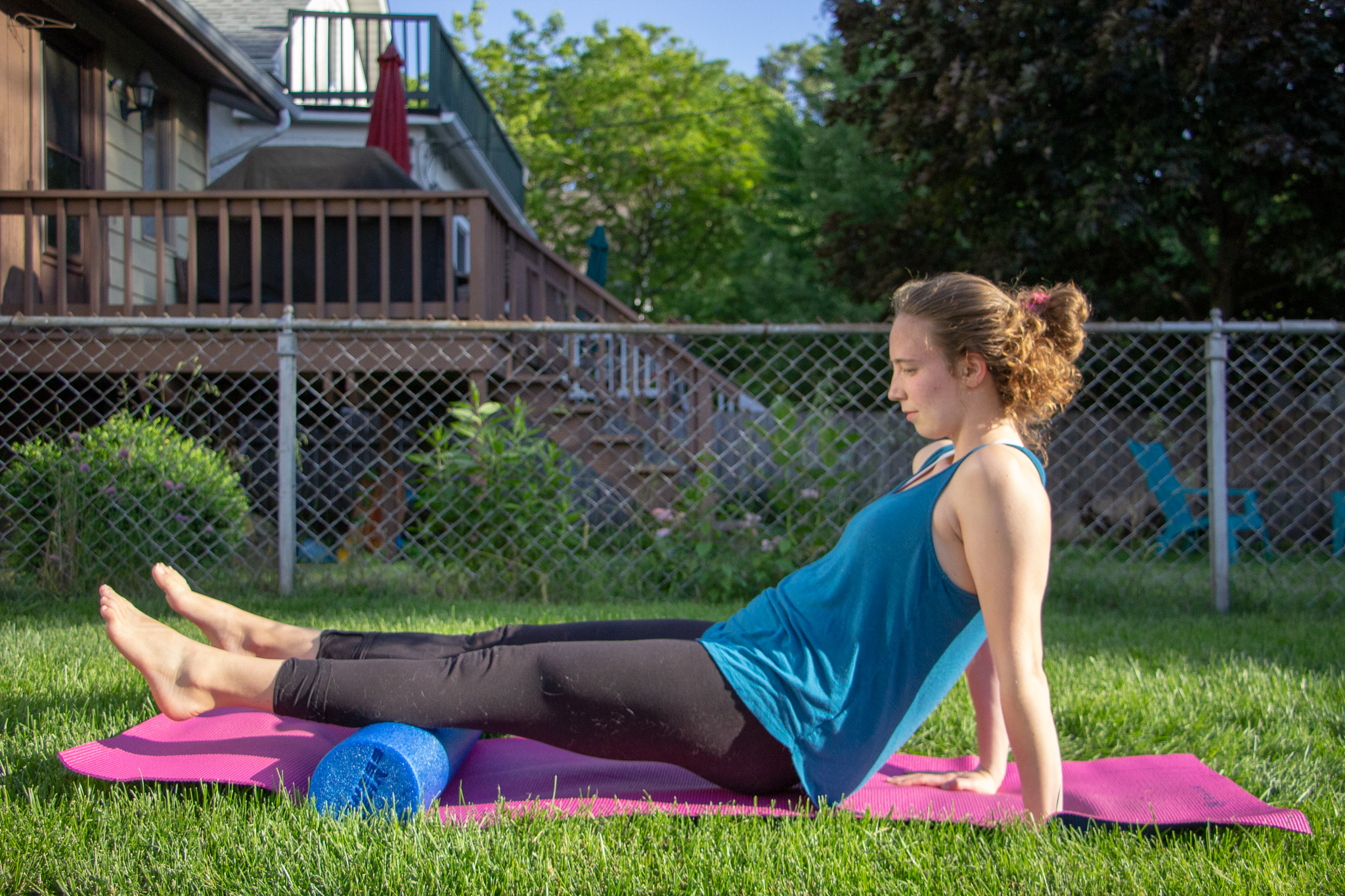
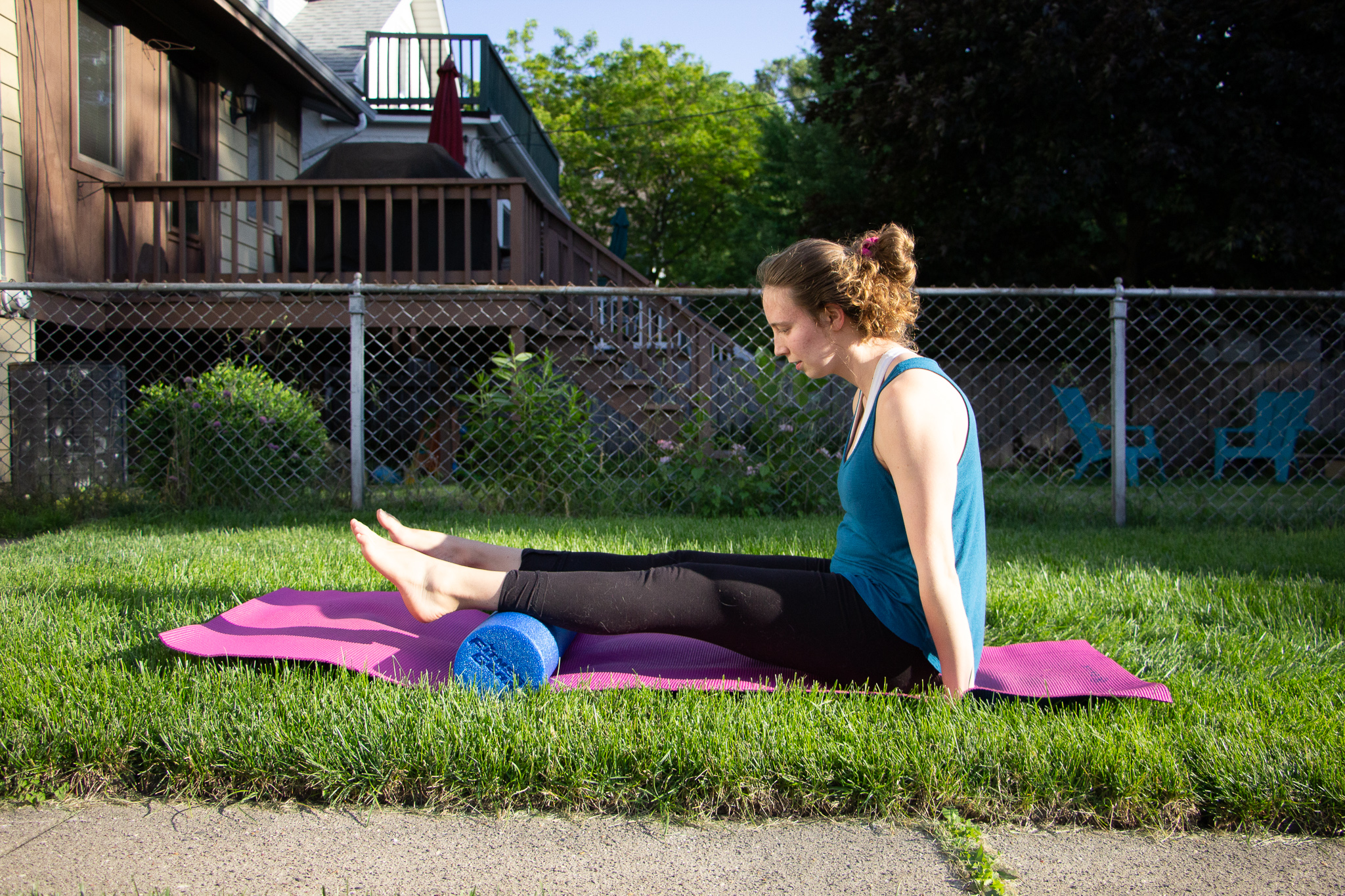
Sit up with the foam roller underneath your calves. You’ll roll from just below the knee to just above the ankle. Repeat 10 times.
5. IT band. This is another one that may present some tenderness at first. But it’s going to ease lower body tension and is especially important if you like to run!

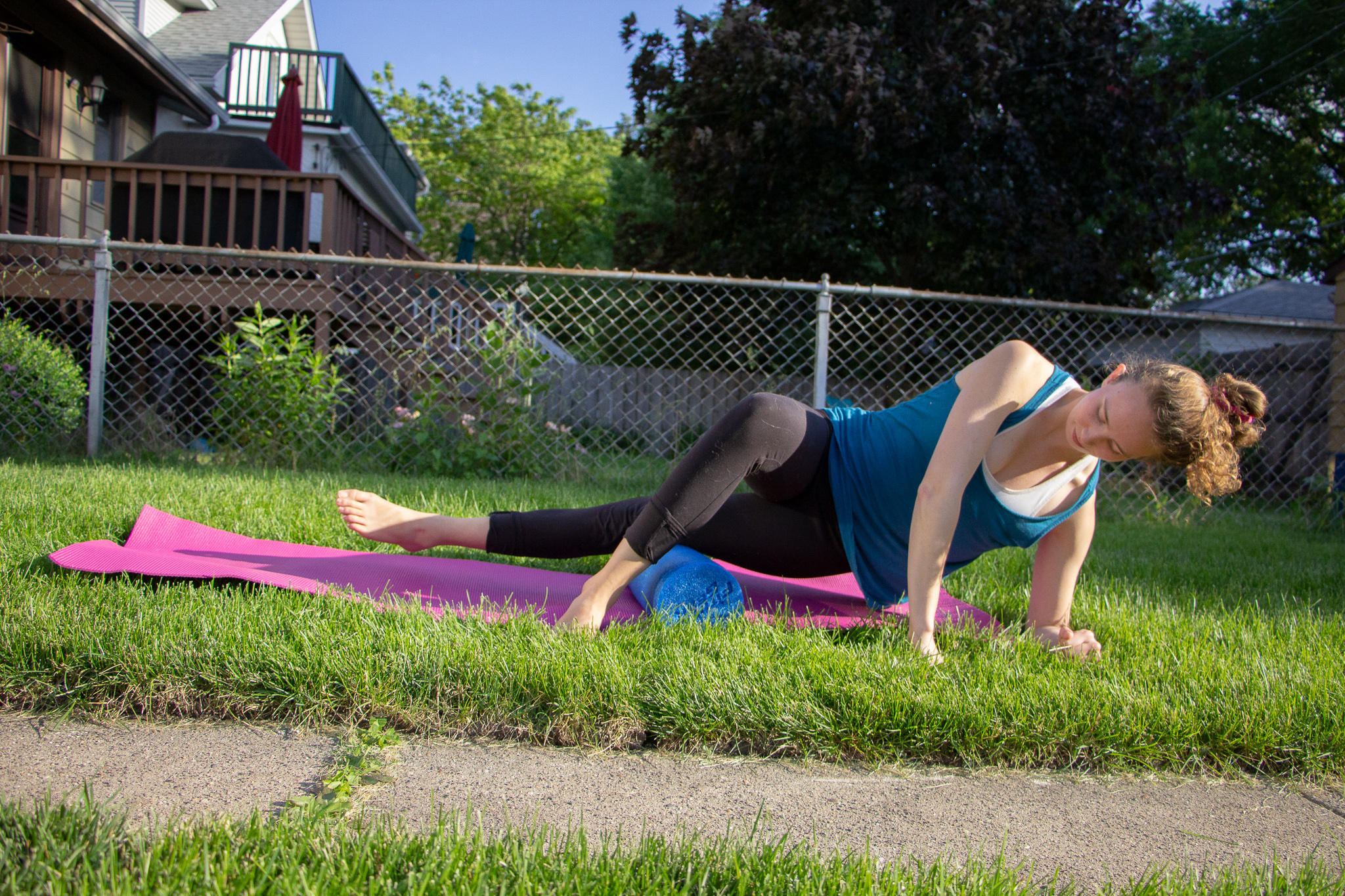
You’re going to lie sideways on the foam roller, using your upper leg to stabilize you in front. You’ll roll from just below the hip to just above the knee. Repeat 10 times.
You can give these movements a try before or after your workout, or any time you have some free time! (For example, I like to foam roll my upper back immediately before going to bed and right when I get up in the morning).
Frequently Asked Questions about Foam Rolling
Q: Is foam rolling supposed to hurt?
Foam rolling is not supposed to cause a lot of pain. When you are just starting out and have never done it before, you may feel a bit of discomfort or tenderness, but stop if you notice any sharp or jabbing pain. Many gyms also have different varieties of foam rollers so start with a softer one before moving up to one that is more firm.
Q: Is foam rolling the same as getting a massage?
Foam rolling is very similar to, but not quite the same as, a traditional massage. Massage therapy involves manually manipulating muscle tissue to break up those adhesions we discussed earlier. Foam rolling applies broad pressure to lengthen and realign muscle. Foam rolling is a cost-effective alternative to getting a massage; an individualized massage also facilitates lengthening of the muscles and will lead to increased range of motion of the joints, but it’s not realistic for the average person to book a massage after every time they work out.
Q: When should I foam roll?
You can foam roll before your workout to warm up (just make sure not to foam roll for too long, as it may lead to a reduced ability of the muscle to contract!), after your workout to facilitate recovery, or any time to ease muscle tension. I typically perform the movements above at the gym after a workout, and I foam roll my upper back each morning and evening. I’ve also found that foam rolling the upper back during the warm-up reduces low back pain during the workout for clients.
Q: Where can I get a foam roller?
Chances are your gym has one! If you don’t belong to a gym (or even if you do!) a foam roller may be worth investing in. You can find them online, in a local sports store, or even in large stores such as Target. This article explains the pros and cons to different types of foam rollers. I typically start clients off with a soft core foam roller and move on to a high-density foam roller or hard core foam roller.
Happy foam rolling! Leave any other questions you have down below!
Also by Maille: Sick Of Planking? This Fun, Low-Back Friendly Alternative Fires Up Your Entire Core
Activate Your Balance & Cinch Your Core With This BOSU Workout
Get more like this—Sign up for our daily inspirational newsletter for exclusive content!
__
Photo: Maille O’Donnell


